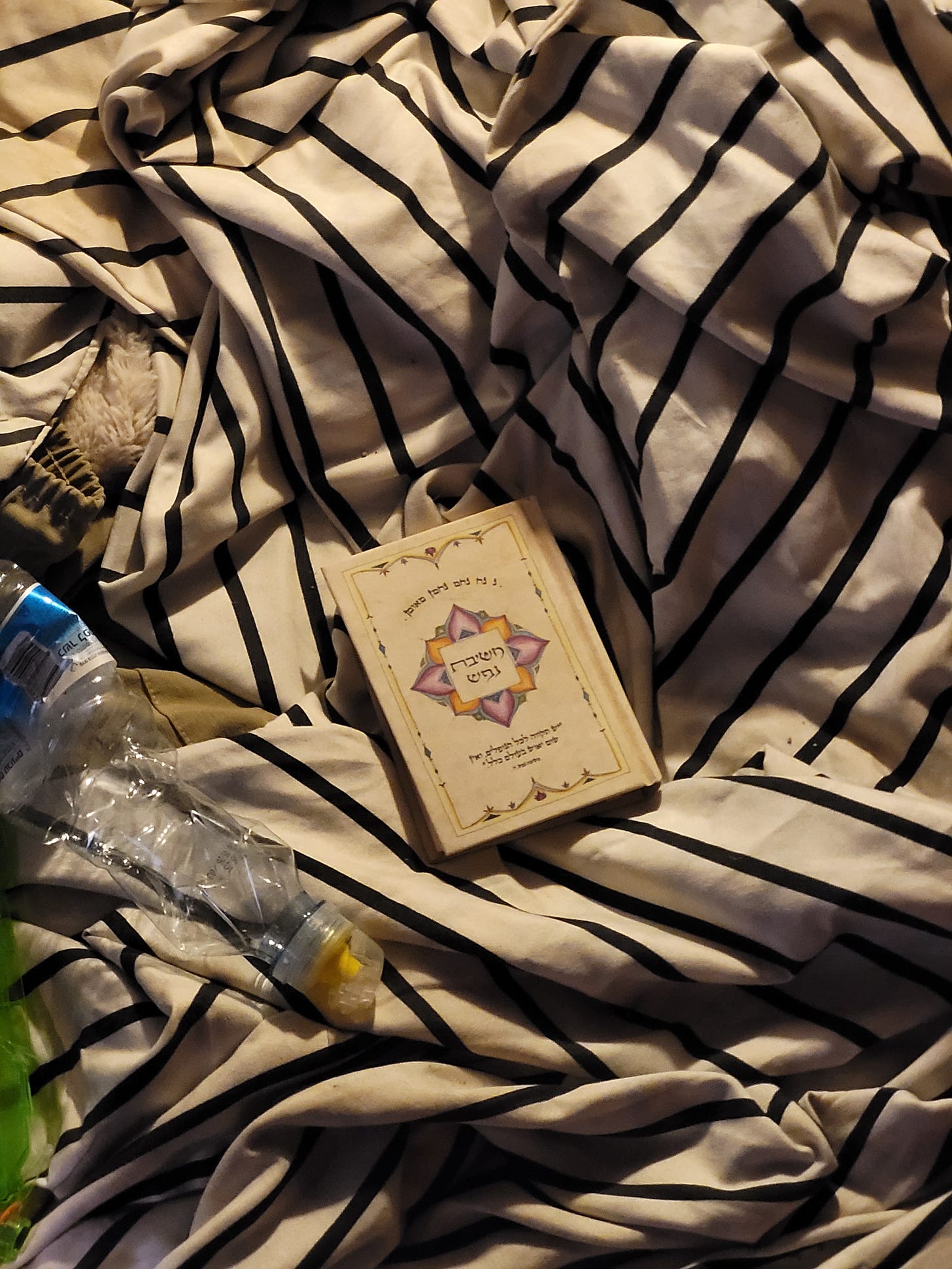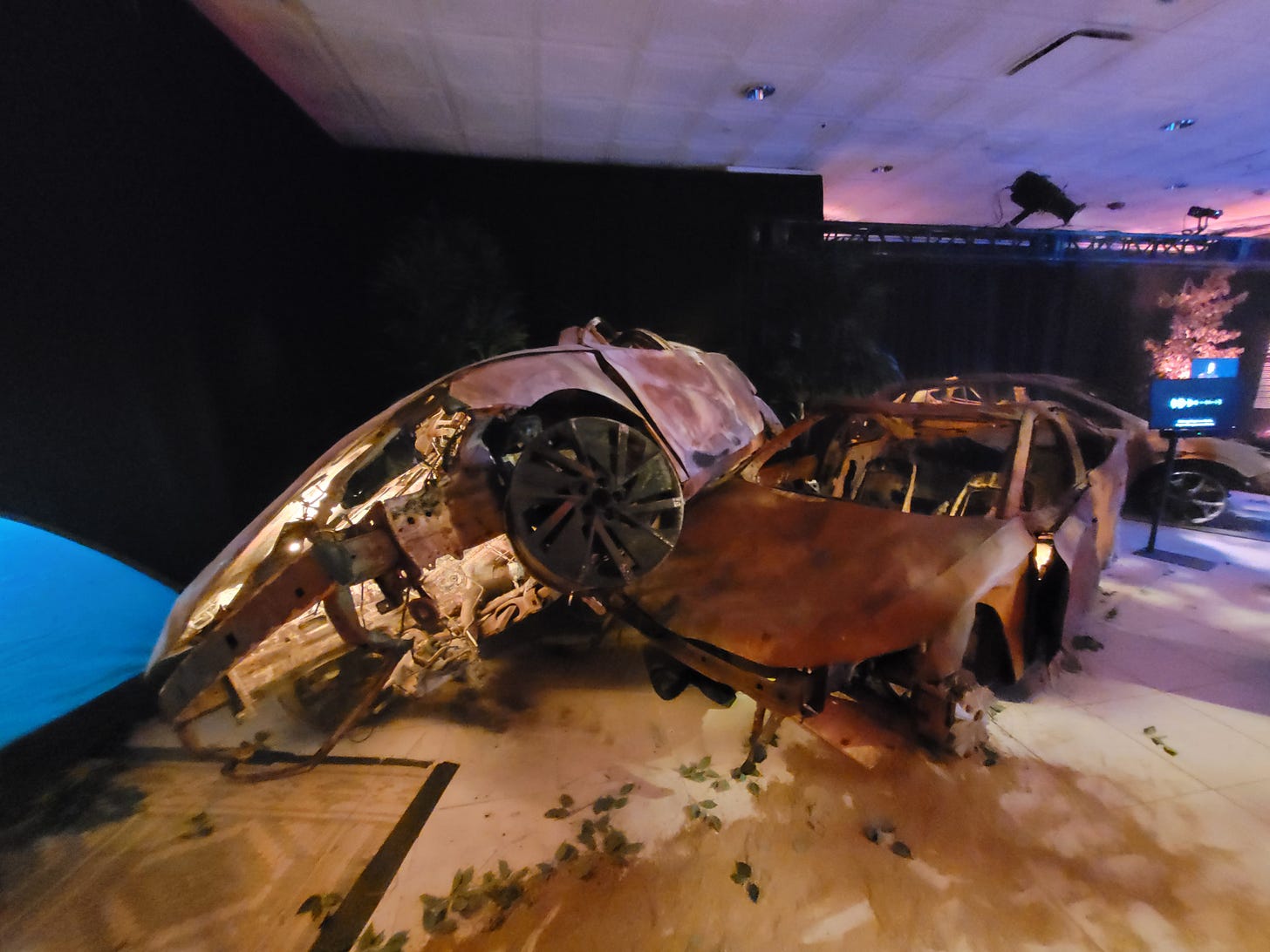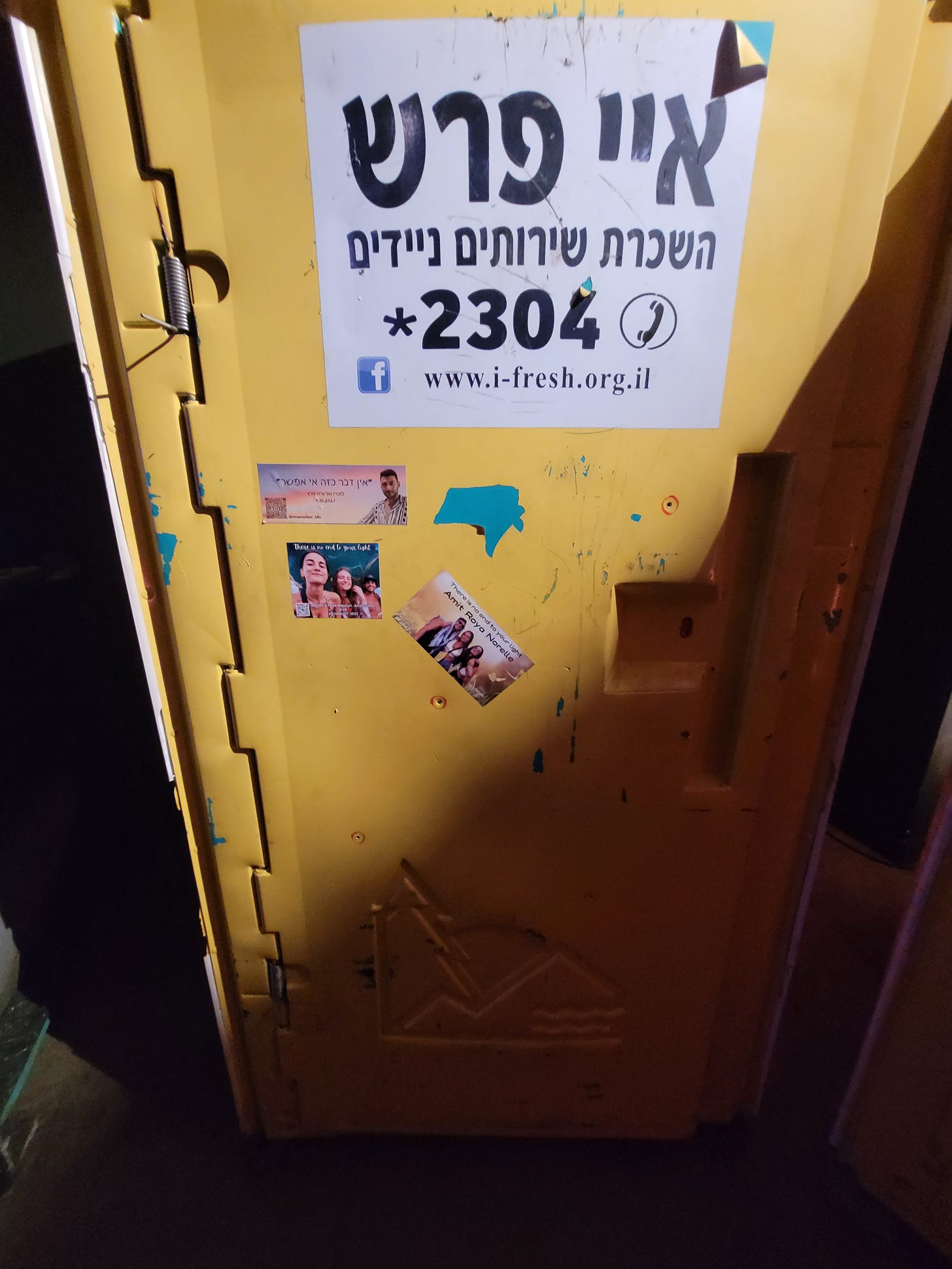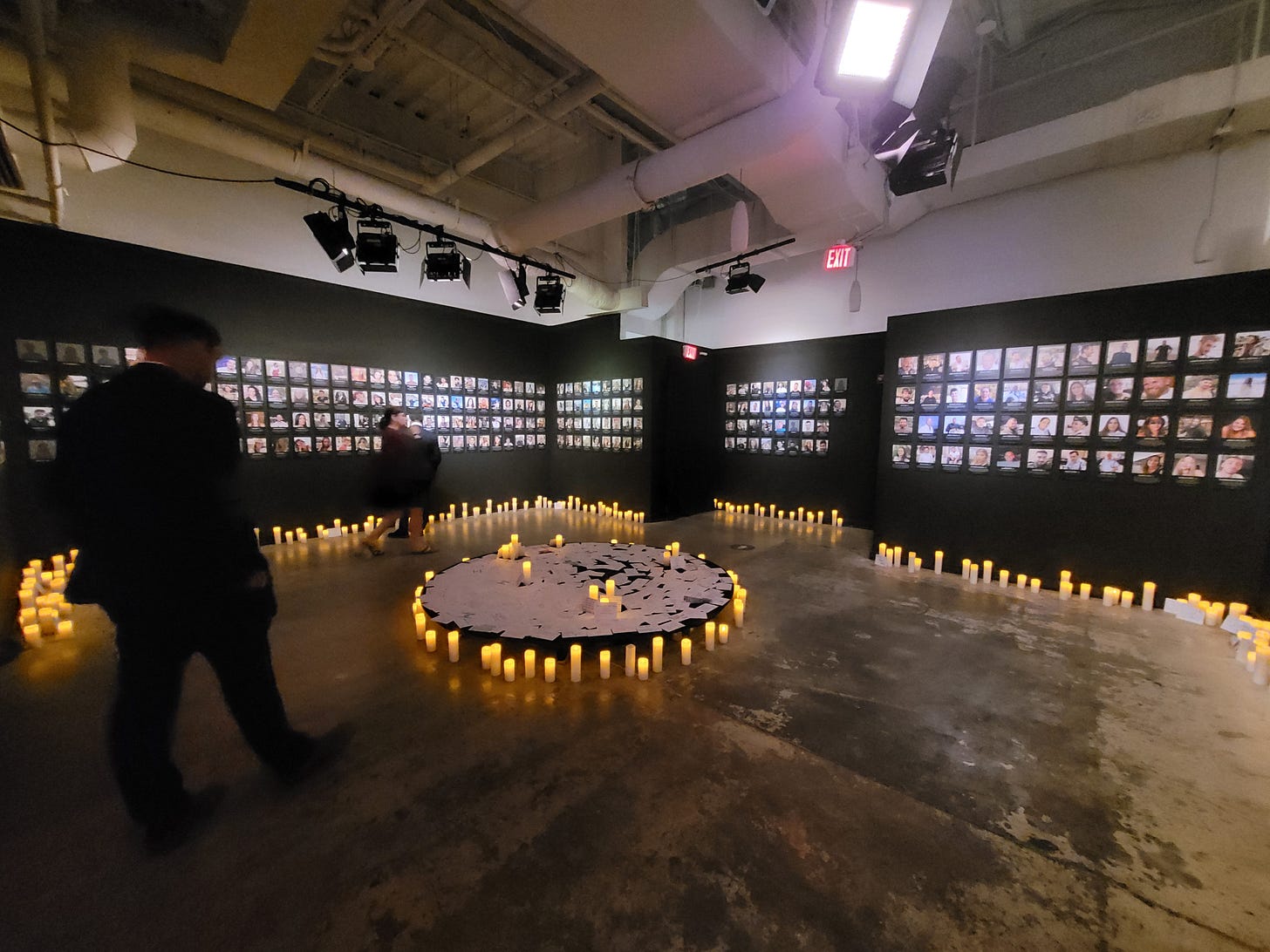For the first time in my life, I visited the White House yesterday to attend a briefing by White House and DoJ leadership on antisemitism. And while it was a very cool experience on a very important matter, I did something even more important beforehand: I visited the Nova Festival Exhibition in Washington, DC, which closes this Sunday. It was a harrowing experience, and I would like to share some reflections about what it was like to be there.
People often think that the job of the historian is to accurately describe what “really happened” in the past. And this, no doubt, is the most basic fundament upon which all historical inquiry is built. But there is an even more important task, which is that the job of the historian is to figure out what the past was really like. Of course, doing so is quite hard. It is incredibly difficult to recreate the social and intellectual structures that enable the historian to “explain” past events. Nevertheless, succeeding in doing that is what separates good from great historians.
Another challenging aspect of history is the attempt—often futile—to write the type of prose that could possibly plunge the reader into the moment the historian describes. One imagines that there are simply no accurate words to imagine what it was like in Pearl Harbor on December 7th 1941, and equally unimaginable to read prose that captures the savagery of the Crusades. The sad reality of written history is that it very often dulls the experiential side of historical events. One often needs more than history books to imagine what the past was really like.
As readers of this Substack know, October 7th threw me into the grips of despair. It shattered so much of what I thought I knew about the world. I’ve spent every day since 10/7 studying and tracking the war that has followed, but I’ve never forgotten the feeling I had upon learning the news and then subsequently seeing videos of the attack. And yet, I was woefully unprepared for what I saw yesterday.
Upon entering the Nova exhibit, I would come face to face with what I think was the most harrowing aspect of it all: the smell. The minute I entered the venue, the air smelled like smoke, fire and gunpowder. The room smelled like every gun range I’ve ever been to. I realized that for all intents and purposes, that was in fact where I was. The exhibit items in front of me were all once downrange from guns and RPGs, wielded by some of the world’s most savage terrorists. Immediately, my senses were on high alert.
Walking through the first part of the exhibit, you find yourself walking on sand brought in from the Nova festival, and are greeted by tents, sleeping bags and other personal belongings from those who lost their lives on 10/7. It is terrifying. A moment in time, frozen. In every tent was a cellphone, playing video from both victims and terrorists as the savagery began. My chest began to tense up.
Moving past the tents, I came across another harrowing sight: three totally burned out cars. I honestly lack the words to describe what it’s like standing in front of three cars that are skeletons of themselves. To think that the heroes at Zaka were tasked with combing through every inch of these cars to salvage whatever human remains were there simply boggles the mind.
Upstairs, we were presented with a short video of several survivors of the festival describing just what the festival was like. How alive it made them feel, how no one was ever without a smile. To many Nova festival-goers, the euphoria they felt there was religious. Watching the video, I started to cry. Those infections smiles, the sense of joy and camaraderie…squandered in blood.
And then, the yellow porta-potties. How awful it was to see them. If there is one piece of footage that so often creeps up into my mind’s eye, it’s that video of the terrorists shooting into them. And here they were in front of me, with the bullet holes circled in red marker. Yellow, my favorite color, a color that is otherwise bright and cheerful, stained by blood.
Past the yellow porta potties was a recreation of the Nova festival, complete with the tarp that hung above the DJ and crowd. In the far corner was a recreation of the bar, whose footage of an Israeli calling for signs of life to the dead was playing above it. House music was quietly playing. It really looked like an awesome time. The contrast is simply overwhelming.
Turning a corner, one enters a room that looks eerily similar to the Hall of Names in Yad VaShem. Here, in this dimly lit room, were pictures and brief sentences of the victims. It was hard to read all the names behind a veil of tears. But the one thing that still strikes me is just how young they were. So many of those killed on 10/7 and since were my age. It could have been me. It could have been you.
There were two other parts to the exhibition that deserve special attention. Before heading upstairs to see the video about the Nova festival, there was mock ma’mad, bomb shelter, that one often sees along the road in Israel. Posted outside was a sign, describing the events that took place inside one bomb shelter just like this.
Aner Elyakim Shapira was a 22 year old Staff Sargent from Jerusalem, a soldier in the elite Nahal brigade. Aner was at the Nova festival on 10/7. When the shooting began, Aner started to flee, and soon got word that he was being recalled to his military base. On his way to base, he stopped along Route 232 to seek safety in a roadside bomb shelter. Inside, he found 26 people, all young and all deathly afraid. But have no fear, he said. He told them: “My name is Aner Shapira, I’m a soldier with the Nahal Recon Unit, don’t worry, everything will be alright.”
Soon after, terrorists began closing in on their location. Aner positioned himself at the entrance to the shelter and fought off terrorists who tried to enter. Aner was unarmed. Then, Hamas terrorists began lobbing grenades inside the shelter. Aner caught 8 grenades and threw them back outside. Realizing that they were up against Godly strength, the terrorists fired an RPG. Aner was killed. 16 others were killed and 4, including Hersh Goldberg-Polin, were taken back to Gaza.
Reading this story, I was glad that I was alone. I started sobbing uncontrollably. Aner’s face was one of reassurance, his smile one of the most disarming smiles I’d ever seen. At 22 years old, he displayed a level of courage, bravery, resolve and strength that I honestly thought didn’t exist on this earth anymore. One imagines that the Greeks didn’t have Gods as powerful as Aner actually was. From where does that strength come from? I do not know. But the next time I go to Israel, I will not leave until I visit and kiss his grave. I used to think that superheroes only belonged to fiction. I think differently today.
The very last part of the exhibit was a testimony. Two survivors of the Nova Massacre, Daniella and Milat, addressed the crowd and told over their stories. Though they were so incredibly brave to publicly recount what was the worst day of their lives, it was so clear that they were still so badly hurting. A dropped water bottle made Milat jump, and it took her a few minutes to recover from the sudden bang. It was clear that the images and sounds still play in their minds on repeat and autopilot.
But it was also clear that they’ve decided that they are going to move forward with their lives. Not move on, but move forward. That they will dance again. When asked if either of them is angry, both responded in the negative. “The world needs more love and less hate,” they said. In my life, I’ve never felt so small. Though I never hope to hear testimony like that ever again, I’m grateful to have experienced Daniella and Milat. “Heroes” doesn’t even cut it.
I write this post at Gate C5 at Dulles airport just outside DC. Thankfully, I’m here early enough for there not to be too many people wondering why the kid in the Under Armour hat is crying over his laptop. In a few hours, I fly out to Europe and in a few days, I’ll stand on the beaches of Normandy. There too, brave kids—all around my age—acted heroically to defeat the Nazis and save the free world. Young soldiers participated in one of the world’s most daring military operations, knowing that death was likely to meet them on the beaches. And yet, they acted. When I stand in the American cemetery, I have no doubt that I’ll feel as small as I did yesterday. All give some, but some give all.
I end where I began. Good military history does something additional, something that separates it from other types of history: it inspires us. We read military history because it is war that offers opportunities for otherworldly heroism and courage. We need stories of courage and heroism, for it serves as a tonic to the evil that permeates the world. Yesterday, I saw and read stories of the most incredible heroism, the most honorable courage. I cannot just let this moment go by. I have to find ways to emulate some aspect of Aner’s heroism, some part of Daniella and Milat’s courage.
I hope you will too.








